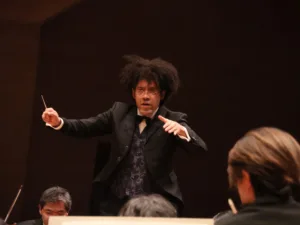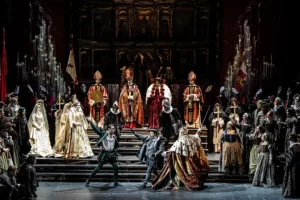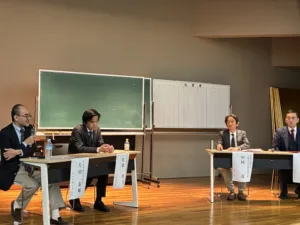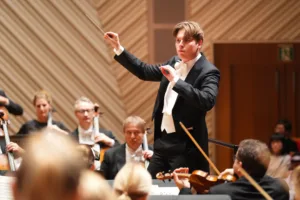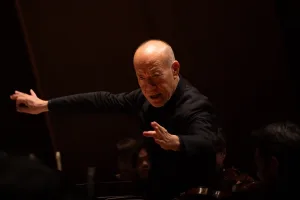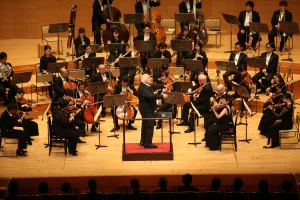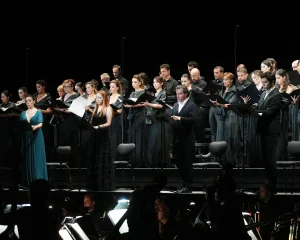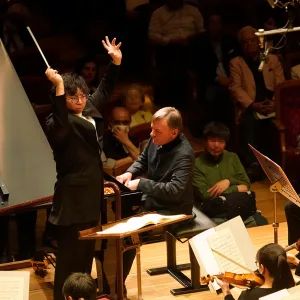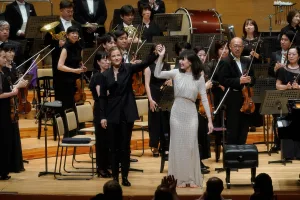A Complete Triumph for Mäkelä and the Orchestre de Paris —A Vivid Reinterpretation of Two Iconic French Symphonies—
By Kyosuke Hasegawa
Making their debut at MUZA Kawasaki Symphony Hall, Klaus Mäkelä and the Orchestre de Paris delivered a monumental performance featuring two of France’s most representative symphonies: Saint-Saëns’s Symphony No. 3 “Organ” and Berlioz’s Symphonie fantastique.
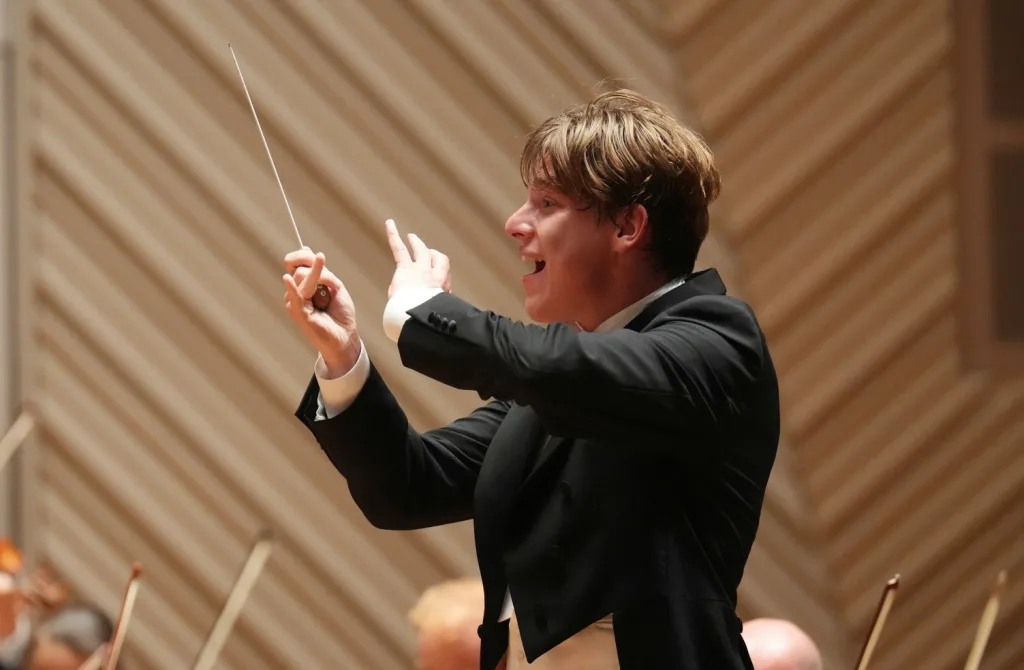
In the first half, featuring Saint-Saëns’s Symphony No. 3 “Organ”, the distinctive character of the Orchestre de Paris was showcased in every detail. The richly colored woodwinds, the brass shimmering like dusted gold, and the warm organ tones played by Lucile Dollat blended together beautifully.
Mäkelä, guided by the philosophy of his mentor Jorma Panula—to “support without overpowering”—brought out the individual personalities of the musicians while leading the performance with clear and coherent structural direction.
The first movement began with caution, and as the second theme gained intensity, Mäkelä and the Orchestre de Paris truly came into their own. In the Poco Adagio, the warm and rich tones woven by the organ and strings captivated the audience. The violin variations were exquisitely delicate, as if under a spell.
In the second movement, the scherzo-like first half gave way to a light and lively piano four-hands passage, followed by the interplay between the strings and piano that introduced the recurring theme, building towards the climactic finale. A march-like theme combined with timpani arpeggios, while brass and organ melodies overlapped majestically. Under Mäkelä’s meticulous direction, every sound fused in orderly harmony, culminating in a grand climax.

In the second half, Berlioz’s Symphonie fantastique—long regarded as a signature repertoire piece for the Orchestre de Paris, famously associated with Charles Munch—was vividly reimagined by Mäkelä, who carved out a new chapter in its history.
The dedication of the musicians, symbolized by the concertmaster’s dramatic backward lean as he led the ensemble, was overwhelming. The orchestra’s collective spirit, fully committed to their maestro, permeated the performance, and the joy in their playing was clearly reflected in their expressions.
In the final movement, the interplay between the “Witches’Round Dance” and the “Day of Wrath” themes surged into a breathtaking climax. A torrent of sound converged into a single point, filling the hall with a soaring sense of exhilaration. Mäkelä and the Orchestre de Paris took full advantage of MUZA Kawasaki’s acoustic properties to produce a sound that was clear, richly colored, and warmly expressive. The sensation of a vibrant flood of tonal colors rising to a pinnacle felt unprecedented.
There were many other memorable moments as well. The exposition of the first movement and the first half of the fourth movement’s “March to the Scaffold” were both repeated, with the second iterations delivering even deeper, more penetrating expressions. The refined elegance of the second movement’s “Ball” and the pastoral scene in the third movement were highlighted by spatial effects, such as the cor anglais’s shepherd-like flute being answered by the oboe from the front of the third-floor R4 entrance. These details revealed meticulous artistic care.
For the encore, Bizet’s Carmen Prelude was performed brilliantly, igniting enthusiastic applause from the audience. Mäkelä received a solo curtain call, bringing the evening to a miraculous conclusion where stage and audience became one.
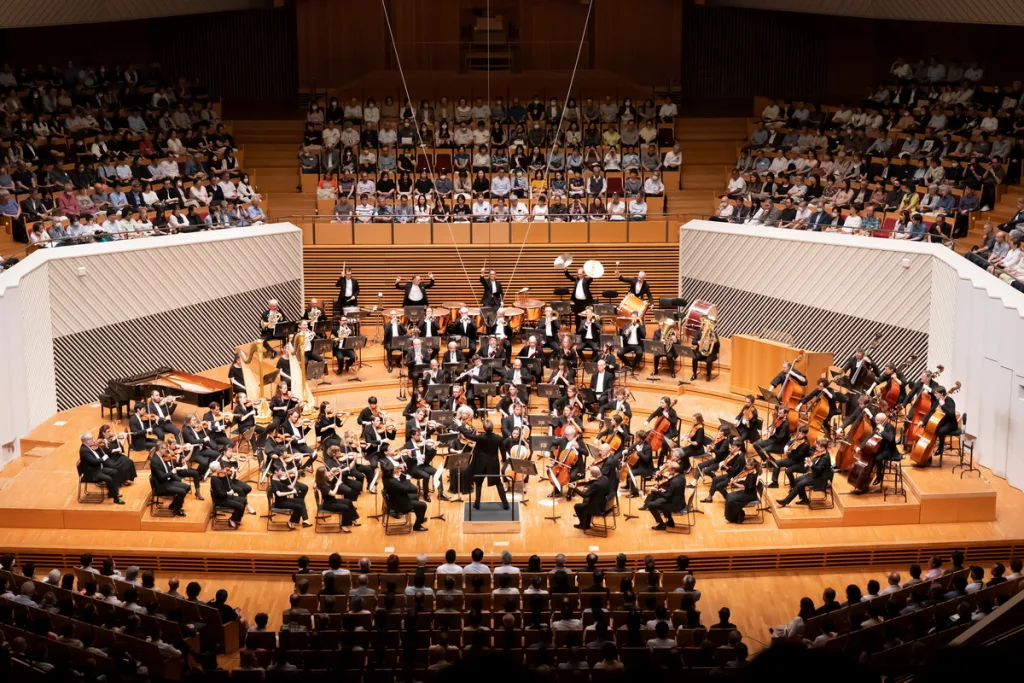
Performance Data
MUZA Kawasaki Symphony Hall Special Orchestra Series 2025
Klaus Mäkelä, Conductor — Orchestre de Paris
Date & Time:
Wednesday, June 18, 7:00 PM
MUZA Kawasaki Symphony Hall
Artists:
Conductor: Klaus Mäkelä (Music Director)
Pipe Organ: Lucile Drau
Orchestra: Orchestre de Paris
Program:
Saint-Saëns: Symphony No. 3, Op. 78 “Organ”
Berlioz: Symphonie fantastique, Op. 14
Encore:
Bizet: Prelude from the opera Carmen
Additional Performances:
Thursday, June 19, 7:00 PM
Friday, June 20, 7:00 PM
Suntory Hall, Main Hall
For detailed program information, please visit the official website below:
https://avex.jp/classics/odp2025/

